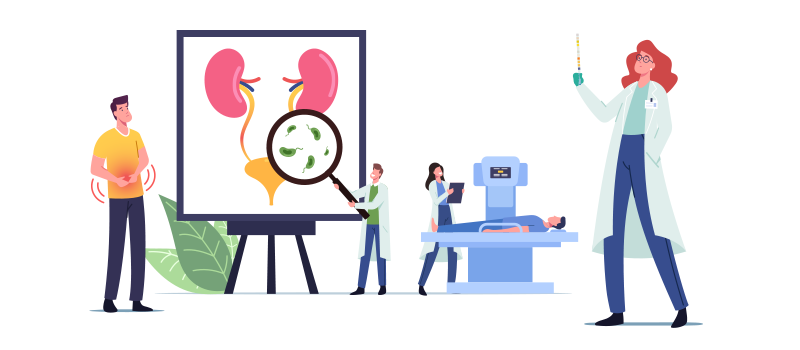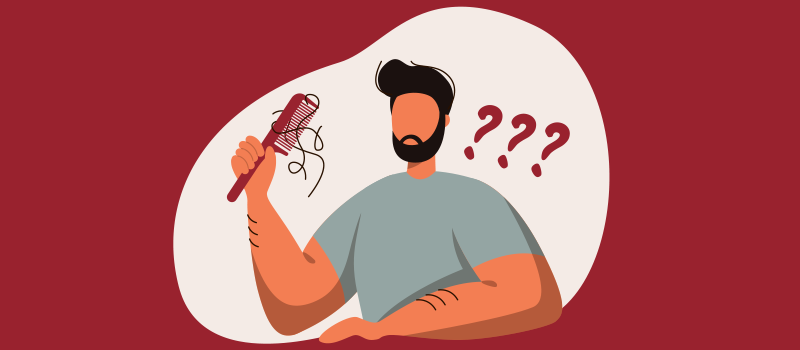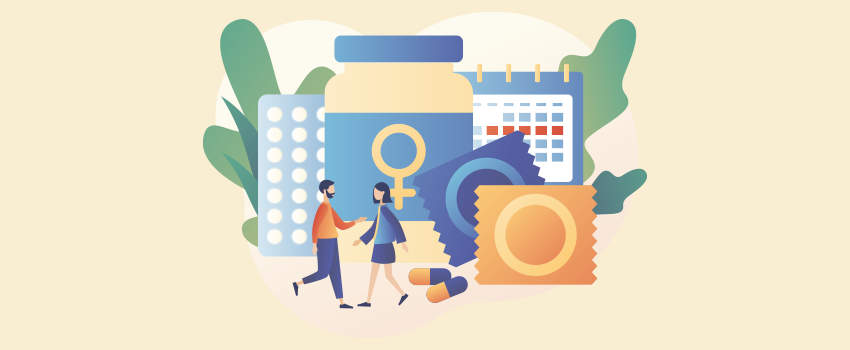Signs of High Testosterone in Men

Testosterone has a bad reputation. It is frequently believed to be the culprit behind aggressive behavior, violence, road rage, sexual promiscuity, and type A personalities. However, the sex hormone testosterone has many important roles in both the female and male bodies. Please continue reading to learn more about this sex hormone, including normal levels of testosterone and signs of high testosterone in men.
What is testosterone?
Testosterone is the main male sex hormone. The other sex hormones are follicle-stimulating hormones (FSH) and luteinizing hormones (LH). Both males and females have testosterone, but males naturally have higher testosterone levels.
Testosterone production occurs in the testes in males and ovaries in females. A precursor of testosterone called dehydroepiandrosterone (DHEA) is made in the adrenal glands.
Synthetic testosterone is available as a medication for testosterone replacement therapy in people with a testosterone deficiency. Anabolic steroids, which are used by some bodybuilders to increase muscle mass and enhance athletic performance, are synthetic forms of testosterone. Testosterone levels can be measured with a blood test.
What are normal testosterone levels?
Studies have shown that total testosterone levels in males between the ages of 19 and 39 range between 300 and 1000 ng/dL. These are considered normal testosterone levels in males. Anything above 1000 ng/dL total testosterone (30 ng/dL free testosterone) is considered high testosterone in men.
How much testosterone you have can vary with the time of day. Testosterone levels are usually highest between 8 AM and 10 AM. On the other hand, a recent illness can lead to falsely low testosterone levels. With age, there is a natural decline in the amount of testosterone in men.
Note: Females usually have lower testosterone levels than males. Healthy testosterone levels in females range from 9-55 ng/dL.
What does testosterone do to a man?
Testosterone plays an important role in the normal reproductive and sexual function of men. It is responsible for the development of secondary sexual characteristics in males during puberty, such as:
- Enlargement of the penis and testes
- Sperm production
- Deepening of the voice
- Body hair growth
- Growth of facial and pubic hair
- Increased muscle mass
- Bone growth and increased bone strength
- Sex drive (libido)
Testosterone continues to play important roles beyond puberty, including the ability to maintain muscle mass and bone mass, fat distribution, sperm formation, libido (sex drive), and the formation of red blood cells. Later in life, testosterone may play a role in male pattern baldness.
What are the signs of low testosterone?
Low testosterone is defined as anything below the normal range of 300-1000 ng/dL. A testosterone deficiency can lead to inadequate masculinization in adolescent boys. For example, their testicles and penis may not increase in size, they may not develop body hair, and their voice may not deepen.
In adult men, lower than normal testosterone levels can lead to erectile dysfunction, low libido, shrinking testicles, reduced sperm count or azoospermia (zero sperm count), loss of body hair, hot flashes, mood swings, depressed mood, reduction in muscle mass and stamina, weight gain, gynecomastia (male breasts), low blood pressure, and sleep disorders like sleep apnea.
If you have low hormone levels, your healthcare provider will first identify the cause of low circulating testosterone levels. Then, if appropriate, they may prescribe testosterone replacement therapy to treat low testosterone levels. Testosterone therapy is available in the form of testosterone supplementation tablets. You can also take testosterone treatment with skin gels, patches, pellets, nasal gels, and injections.
Testosterone therapy is also used to reduce gender dysphoria and emotional distress in people assigned female at birth who identify as male. It can help to match a person’s body and gender identity and promote gender congruence.
What are the signs of too much testosterone?
It is not common for men to have naturally high testosterone levels. Rather, in most cases, high testosterone levels are from the use of synthetic testosterone supplements such as an androgenic or anabolic steroid. However, sometimes health conditions such as pituitary gland dysfunction or adrenal tumors can lead to high testosterone in men.
Oddly enough, excess testosterone levels can lead to shrinking testicles and low sperm count in adult men. In adolescent boys, testosterone spikes can lead to poor growth and development.
Other signs of high testosterone (T levels) include:
- Acne
- Fluid retention and weight gain
- Headaches
- Trouble sleeping
- High blood pressure
- High cholesterol
- Increase in muscle mass
- Increased risk of blood clots
- Damage to the heart muscle
- Increased risk of cardiovascular disease and heart attacks
- Enlargement of the prostate gland and difficulties urinating
- Growth of prostate cancer cells
- Liver disease
- Behavior changes such as aggression, irritability, mood swings, poor judgment, and delusions
- Increased sex drive
- Increased erectile function
- Deeper voice
- More body hair
In females, high testosterone can cause health problems like polycystic ovary syndrome. High testosterone levels can also lead to masculinization in females. Signs and symptoms of high testosterone in females may include acne, increased body hair, male pattern baldness, decreased breast size, increased muscle mass, deepening of the voice, and increased sex drive.
Does masturbating reduce testosterone?
No, masturbating does not reduce testosterone. Ejaculating or having frequent sex also does not increase T levels. Testosterone levels in the body are regulated by the brain. The hypothalamus and pituitary gland secrete hormones that act as signals to the gonads (testes and ovaries) for producing testosterone and other sex hormones.
References:












SOCIAL